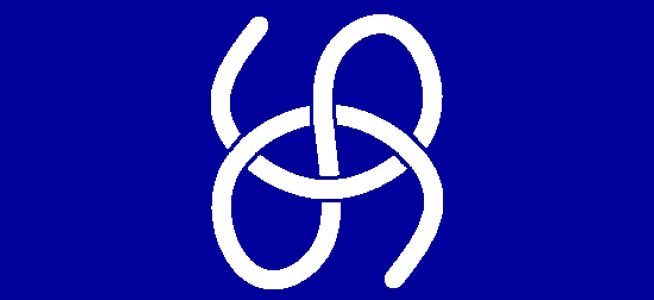
[image Denise Applewhite, Princeton University].
John Horton Conway was a charismatic character, something of a performer, always entertaining his fellow-mathematicians with clever magic tricks, memory feats and brilliant mathematics. A Liverpudlian, interested from early childhood in mathematics, he studied at Gonville & Caius College in Cambridge, earning a BA in 1959. He obtained his PhD five years later, after which he was appointed Lecturer in Pure Mathematics.
In 1986, Conway moved to Princeton University, where he was Professor of Mathematics and John Von Neumann Professor in Applied and Computational Mathematics. He was awarded numerous honours during his career. Conway enjoyed emeritus status from 2013 until his death just two weeks ago on 11 April.
Monster Groups
Conway’s first mathematical breakthrough was to find a group of symmetries associated with the Leech lattice. A group is a set of objects that can be combined to form other objects in the set and that satisfies some other technical requirements. Groups are intimately associated with symmetry. In the early 1600s, astronomer Johannes Kepler studied the problem of how to pack spheres efficiently. The intuitive way, used instinctively for stacking oranges and cannon balls, turns out to be best, but this was not rigorously proved until 1998.
British mathematician John Leech found a dense packing of spheres in 24 dimensions, with an underlying structure now called the Leech lattice. Conway studied this and found a previously unknown finite simple group – an atom of symmetry – with about eight million million million elements. This was huge, but tiny compared with what he was to find later, a group he called the Monster (see Monster Symmetry on this blog).
We live in four dimensions, three of space and one of time. String theory, yet to be established as a valid model of the physical world, suggests 26 dimensions. But the Monster group lives in a space of 196,883 dimensions, and has 8×1053 elements, more than the number of atoms in the Sun.
Monster Moonshine
Conway discovered some strange and intriguing connections between the Monster group and another area of maths, the j-function of number theory. He called this surprising relationship Monster Moonshine, connoting something illuminated by reflected light. Each of these two disparate disciplines sheds light on the other, but we still have much to learn about the connection.
In topology, Conway devised an efficient way of classifying knots. His innovative notation makes it easier to identify knots. According to knot theorist Marc Lackenby at Oxford University, this took Conway just one afternoon to devise. Conway also refined a knot invariant, the Alexander polynomial, inventing what we now call the Conway polynomial. This has become a basic tool in knot theory.
Naming the Day
Conway was widely admired for his facility with magical tricks and his amazing memory feats and ability to calculate at lightning speed. He loved to show off: he could recite pi to thousands of digits. One of his many tricks was to ask for a date in the past or future, and, within a second or two, give the day of the week upon which it fell or will fall. He devised an algorithm, the Doomsday Rule, for doing this.

Image © Dith Pran/The New York Times.
Games and Numbers
Conway delighted in inventing and playing games; one example is Sprouts, described in a post, sproutology, on this blog. He invented several other games, including Phutball and the “Game of Life” in which collections of cells on a grid evolve into new patterns following a few simple rules.. The last-named was popularised by Martin Gardner in Scientific American, and led to an entire new area of research, cellular automata.
Conway’s analysis of the Chinese game Go led him to an entirely new formulation of the number system, extending from the counting numbers through fractions or rational numbers and irrationals like pi to infinitesimals and transfinite numbers. The whole system is an extraordinarily elegant structure called the surreal numbers. Conway believed that surreal numbers would find an application in physics, and was disappointed that this had not happened. He regarded surreals as his greatest discovery/invention [this blogger tends to agree; click for an earlier post on surreal numbers].
Conway made innovative contributions to several areas of mathematics – group theory, topology, number theory and game theory – and wrote several books, both recreational and scholarly. Using Hamilton’s quaternions, he invented the system of icosians in algebra. Conway was a brilliant lecturer and teacher, inspiring generations of students. Just two weeks ago he died of complications when he was infected by Covid-19. The loss of this mathematical genius has saddened the mathematical community.
Sources
Siobhan Roberts, 2015: Genius at Play: the Curious Mind of John Horton Conway. Bloomsbury Publishing. ISBN: 978-1-6204-0593-2.
